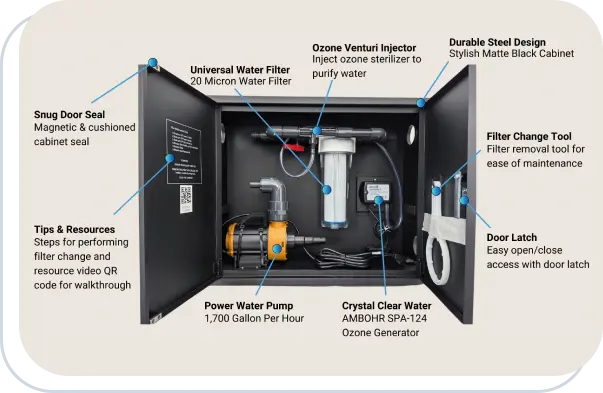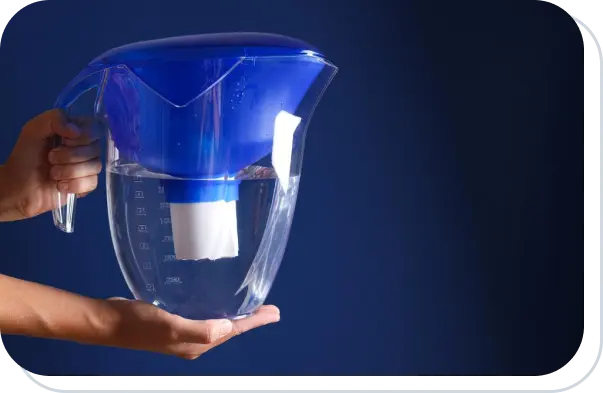Cutting-Edge Ozone Treatment Solutions
Harness the power of ozone with innovative Ozonator technology, tailored for industry-leading efficiency and adaptability.

Ozonator Technology
Ozonator technology has emerged as a powerful and environmentally friendly solution for water and wastewater treatment. Using ozone (O₃), a naturally occurring molecule with strong oxidizing properties, ozonators effectively disinfect water, removing harmful bacteria, viruses, and pollutants.
Unlike traditional chemical disinfectants, ozone treatment leaves no chemical residue, making it a clean, sustainable choice for a variety of applications.

How Ozonator works?
Ozonators generate ozone by introducing an electrical discharge into oxygen molecules, creating a high-energy state that splits O₂ molecules into individual oxygen atoms. These atoms then combine with other O₂ molecules to form ozone (O₃). When ozone is injected into water, it breaks down contaminants through oxidation, ensuring safe and effective purification.

Ozone Production
The corona discharge method utilizes a high voltage electrode and a grounded electrode, separated by a dielectric barrier. When a high voltage alternating current (AC) is applied to the electrodes, a corona discharge occurs in the air gap between them. This discharge generates a high-energy electron stream that collides with oxygen molecules, breaking them apart into oxygen atoms. These atoms then recombine to form ozone.
The corona discharge method is a versatile and efficient technique for ozone generation. Its ability to produce high ozone concentrations and its energy efficiency in comparison to other types of generation makes it a popular choice for various water and wastewater treatment.

Ozone Target Contaminants
The following contaminants or problems can all be potentially treated with ozone:
- Bacteria: all known, including iron bacteria
- Metals: Iron, Manganese and many other
- Protozoans: all known, including Cryptosporidium, Giardia and all Amoebae
- BOD & COD: reacts quickly, as ozone is a really active form of oxygen
- Minerals: inorganics, dyes, and others
- Organics: color, algae, other carbon compounds
- Viruses: all known
Why Ozone?

Benefits:
- 100% Lesser Footprint
- Lower operational cost
- On-site generation
- Improved filtration efficiency
- Most potent oxidizing agent
- No byproducts
- Chemical Free
- Eco-friendly
Features and Customization Options
Key Features:
- Adjustable ozone output for diverse applications.
- Built-in concentrators and cooling options (air or water-cooled) for optimal efficiency in various settings(Ozonator).
- Compact, modular design suitable for small to industrial-scale operations.

Application Versatility

Industries Served:
- Wastewater Treatment: "Effectively treats industrial effluents, removing COD, BOD, and odors."
- Aquaculture: "Ensures pathogen-free water, promoting healthier ecosystems."
- Food & Beverage: "Ideal for sanitizing equipment and purifying process water."
- Odor Control in Industrial Settings: "Ozone neutralizes odors without masking them, ensuring air quality."
Comparison with other technologies
| Feature | UV Treatment | Chlorine Treatment | Ozone Treatment |
|---|---|---|---|
| Effectiveness | Effective Against Bacteria And Viruses. | Effective Against A Wide Range Of Microorganisms. | Highly Effective Against Bacteria, Viruses, Parasites, And Other Contaminants. |
| Safety | No Chemical Byproducts. | Potential For Disinfection Byproducts (DBPs) Like Trihalomethanes (THMs). | No Harmful Byproducts, As Ozone Decomposes Into Oxygen. |
| Environmental Impact | Minimal Environmental Impact. | Can Create DBPs That May Harm Aquatic Life. | Minimal Environmental Impact, With No Harmful Residues. |
| Maintenance Needs | Requires Regular Cleaning And Lamp Replacement. | Requires Regular Chemical Feed And Monitoring. | Requires Maintenance Of Ozone Generators And Off-Gas Destruction Systems. |
| Residual Disinfection | No Residual Disinfection. | Provides Residual Disinfection. | Minimal Residual Disinfection, But Can Be Combined With Other Methods For Longer-Lasting Protection. |
| Taste And Odor | No Impact On Taste Or Odor. | Can Impart A Chlorine Taste And Odor. | Improves Taste And Odor By Oxidizing Organic Compounds. |
| Cost | Higher Initial Cost, Lower Operating Costs. | Lower Initial Cost, Higher Operating Costs. | Higher Initial Cost, But Often Lower Long-Term Costs Due To Reduced Maintenance And Chemical Usage. |








